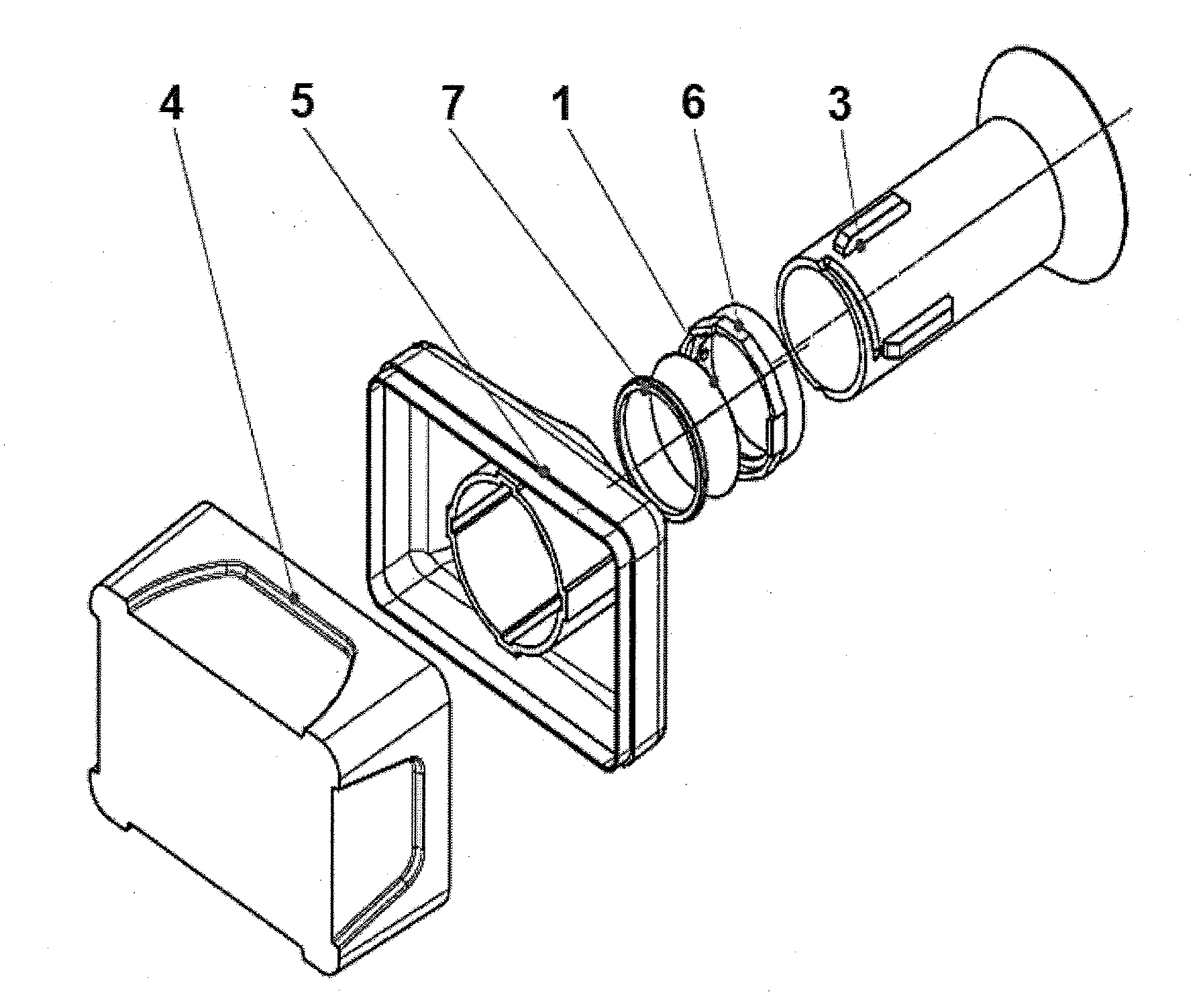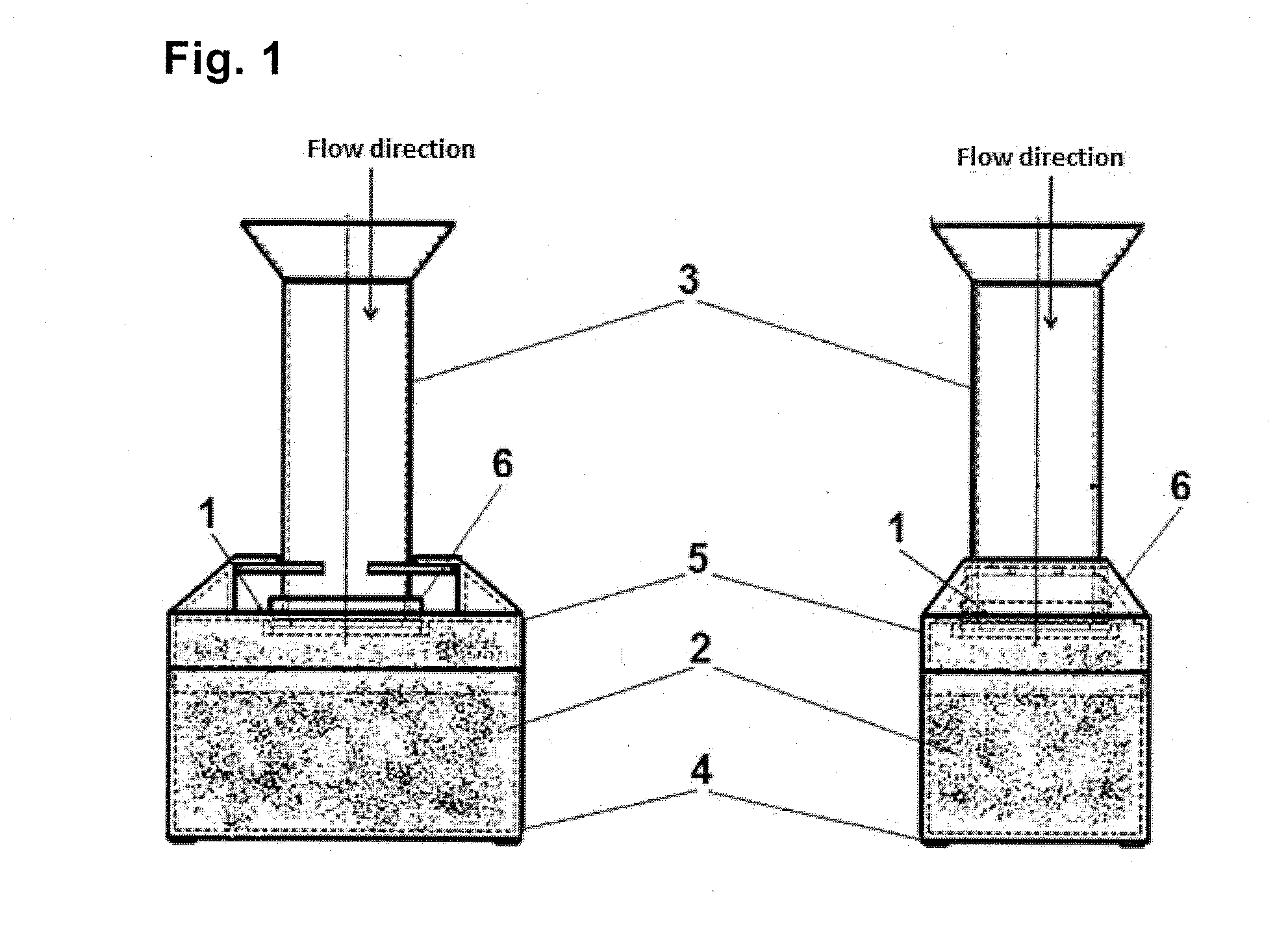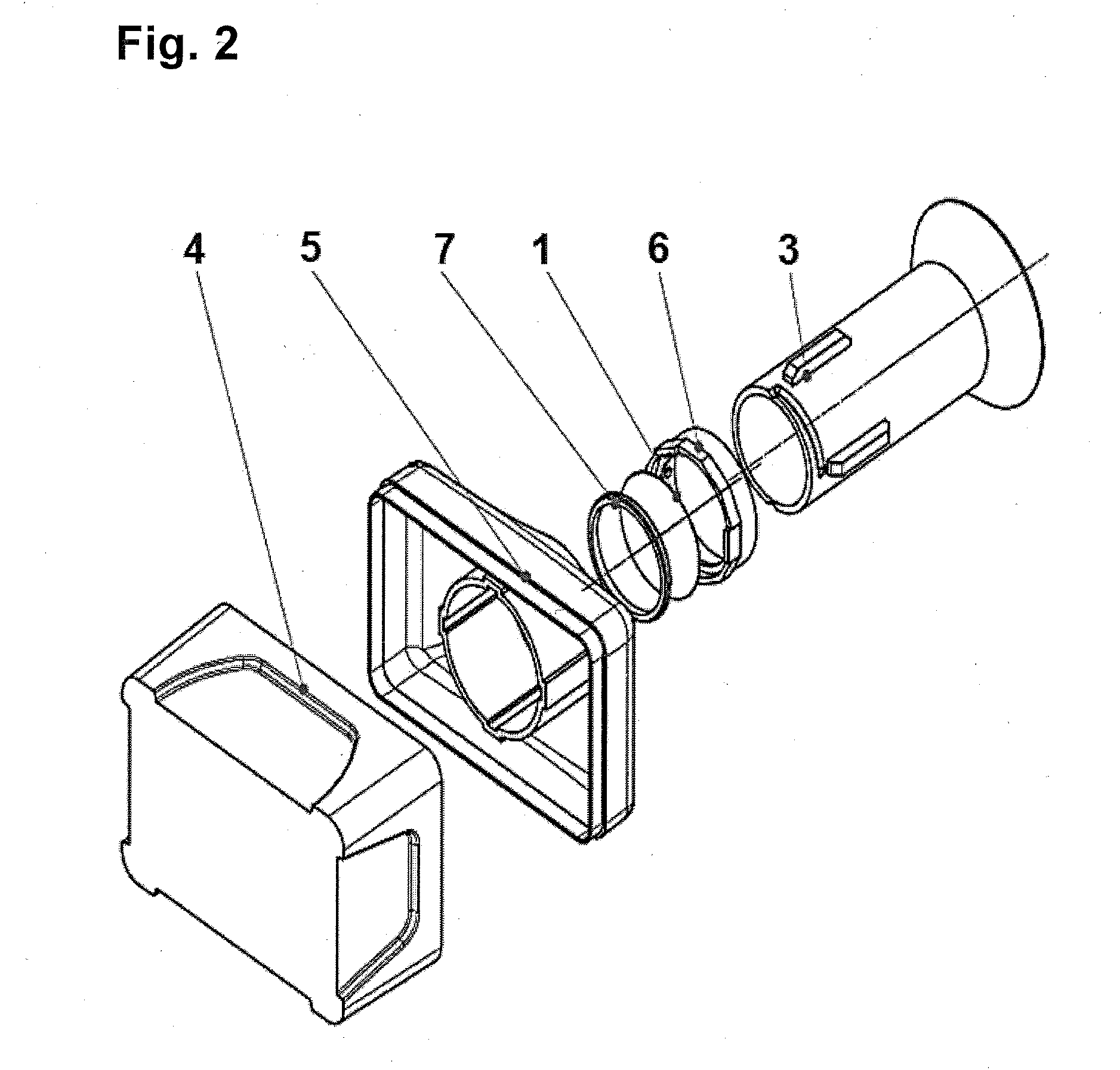Method for separation of sporadic cells from body fluids, and apparatus for carrying out said method
a technology for sporadic cells and body fluids, which is applied in the field of methods for separating sporadic cells from body fluids, and the apparatus for carrying out said methods, can solve the problems of poor prognosis, difficult selection of authentic and viable ctcs/dtcs, and failure to perform molecular characterization of ctcs, etc., and achieves the effect of increasing the success rate of filtration
- Summary
- Abstract
- Description
- Claims
- Application Information
AI Technical Summary
Benefits of technology
Problems solved by technology
Method used
Image
Examples
example 1
Determination of Circulating Tumor Cells in Prostate Cancer from the Peripheral Blood of Patients Undergoing Surgical Removal of the Primary Tumor
[0063]5-10 ml of peripheral blood is collected during surgery into a collecting tube with EDTA (e.g. Vacuette K3E (REF 456 036), S-monovette K3E (REF 02,1066,001). Blood is processed immediately or stored at 4° C. for a maximum of 24 hours.
[0064]Peripheral blood is gradually applied by the pipette to the container 3 of the apparatus for performing the filtration. The blood present on the first side of the membrane 1 is filtered through the filter membrane 1 of the diameter of 25 mm consisting of a polycarbonate membrane (PCTE) having a pore size of 8 microns (GE, Polycarbonate, 8.0 Micron, 25 mm), wherein the filter membrane 1 is in an intimate contact with the absorbent material 2, the pulp (Pur-Zellin Hartmann). The filtration process takes ca 5 min, depending on the volume of the filtered blood and the blood viscosity.
[0065]Further, it ...
example 2
Determination of Disseminated Tumor Cells in the Metastatic Ovarian Cancer of the Pleural Effusion
[0073]Disseminated tumor cells from the pleural effusion removed from a patient with metastatic ovarian cancer were separated as follows: the effusion was applied by a pipette into the container 3 of the filtration apparatus. The effusion on the first side of the membrane 1 is filtered through the filter membrane 1 of 25 mm diameter made of polycarbonate membrane (PCTE) having the pore size of 8 μm as in Example 1, wherein the absorbent material 2, pulp (Pur-Zellin, Hartmann) is immediately adjacent to the filter membrane 1. The cells were fixed to the filter and analysed as hematological blood stains, stained by standard May-Grünwald staining protocol and evaluated under the microscope.
example 3
Apparatus for Performing Filtration
[0074]One embodiment of the apparatus for performing the filtration shown in FIGS. 1-3 comprises a polycarbonate filter membrane 1, with a pore size of 8 μm, which the absorbent material 2 consisting of pulp is in an intimate contact with, from the bottom side of said membrane. The apparatus further includes a top- and bottom-open hollow container 3 for receiving a mixture of sporadic cells present in the body fluid. For easier pouring of liquids the upper edge of the container 3 is broadened so as to form a funnel. The lower periphery of the container 3 is in tight contact with the upper first side of the membrane 1, and the lower second side of the membrane 1 is in an intimate contact with the absorbent material 2, so that the membrane 1 separates the inner space of the container 3 from said absorbent material 2.
[0075]The absorbent material 2 is arranged in a collecting base container 4 provided with an upper lid 5, into which lid a circumferenti...
PUM
 Login to View More
Login to View More Abstract
Description
Claims
Application Information
 Login to View More
Login to View More - R&D
- Intellectual Property
- Life Sciences
- Materials
- Tech Scout
- Unparalleled Data Quality
- Higher Quality Content
- 60% Fewer Hallucinations
Browse by: Latest US Patents, China's latest patents, Technical Efficacy Thesaurus, Application Domain, Technology Topic, Popular Technical Reports.
© 2025 PatSnap. All rights reserved.Legal|Privacy policy|Modern Slavery Act Transparency Statement|Sitemap|About US| Contact US: help@patsnap.com



